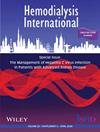The Effect of Spiritual Well-Being on Hope Among Hemodialysis Patients: A Latent Profile Analysis
Abstract
Introduction
Spiritual well-being was a critical component of quality of life for hemodialysis patients. However, existing research primarily concentrates on the overall level of spiritual well-being and associated factors, often neglecting the heterogeneity within the hemodialysis patients regarding their patterns of spiritual well-being. In addition, the effect of spiritual well-being on hope levels in hemodialysis patients remains unclear. This study aimed to examine the latent profiles of spiritual well-being among hemodialysis patients and to explore their effect on hope.
Methods
A convenience sampling method was employed between July 2023 and March 2024 to recruit hemodialysis patients from three teaching hospitals in Sichuan Province as study participants. All participants complied with a demographic questionnaire, the Functional Assessment of Chronic Illness Therapy-Spiritual Well-Being, and the Herth Hope Index. A latent profile analysis was adopted to identify the latent profiles of spiritual well-being among hemodialysis patients, and hierarchical linear regression was conducted to examine their role in hope.
Findings
Two latent profiles of spiritual well-being were identified based on the participants' responses, designated as “Spiritual burnout group”(n = 246, 74.4%) and “Spiritual fulfillment group” (n = 51, 25.6%). Different latent profiles of spiritual well-being among hemodialysis patients have a significant positive effect on the level of hope (ΔR 2 = 0.224, p < 0.001).
Discussion
The spiritual well-being of hemodialysis patients was identified as suboptimal and demonstrated a significant positive association with their level of hope. Healthcare providers could identify the different profiles of spiritual well-being in HD patients and deliver targeted interventions to guide them to positively live in harmony with themselves, others, and the environment to improve their level of hope.

 求助内容:
求助内容: 应助结果提醒方式:
应助结果提醒方式:


